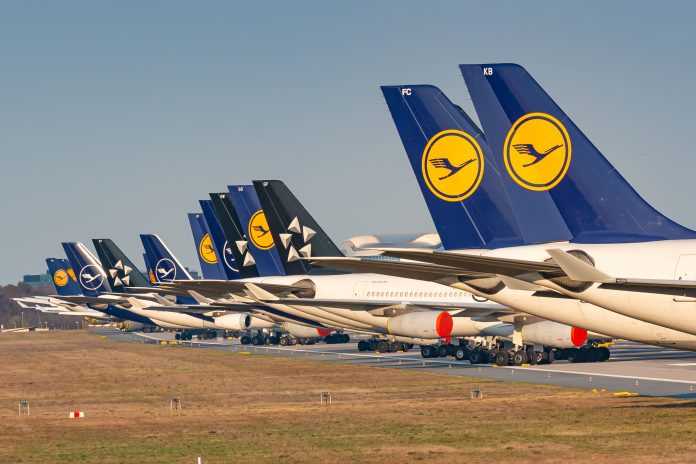Claire Jamison, Senior Engineer at Atkins, discusses why airlines will need to be actively managing aircraft fatigue to ensure their speedy return to the skies when required
It was only in February of this year that the two biggest players in the civil aerospace market, Boeing and Airbus, were showing revenue in the tens of billions of dollars. The recent situation with COVID-19 has enforced an unprecedented reduction in the aerospace industry’s ability to operate. With passenger numbers plummeting and orders being cancelled, the short-term implications are being felt across airlines, manufactures and suppliers.
At some point, the world’s fleet will take off again, but it will take a long time for passenger numbers and revenue to return to something approaching the pre-COVID-19 figures. How long will it take? The answer to that lies, in some degree, in aircraft maintenance.
It is estimated that around 60% of the world’s fleet are currently grounded.
Parking up an aircraft is not as easy as parking up a car. They are complex machines with many parts that need frequent maintenance on systems such as hydraulics and flight controls. Tyres need to be rotated and brakes to be checked. Bird nests need to be dislodged and vermin removed.
Where are the parked aircraft?
As the grounding of some planes happened suddenly, affected airlines had little choice as to where to park up. Ideally, they’re somewhere warm and dry like Australia’s long-term aircraft storage facility, Asia Pacific Aircraft Storage, in Alice Springs which has recently received four A380s from Singapore Airlines. The arid air of the desert is preferable for storing aircraft to the wet, humid conditions of Southeast Asia. Those aircraft stored in damp, humid conditions or close to salt-water run a greater risk of corrosion.
Metals are inherently susceptible to corrosion and prevention is the best cure. Airlines will have a series of preventative measures they need to undertake to avoid corrosion. If corrosion is found the full extent of the damage will need to be uncovered and it must be treated. Corrosion can result in a serious loss of thickness to load-bearing parts, which can lead in turn to increased susceptibility to fatigue and loss of structural integrity.
Level of digital integration and utilisation
When an aircraft is to be returned to service after parking, appropriate checks and tests must be performed to ensure its airworthiness. To park up an Airbus A320 takes around 60 hours; to bring one back into service would take roughly the same again – assuming there are no issues found with corrosion or any damage to parts. This is an onerous task, but advantage could be taken of 3D damage assessment systems which provide a full aircraft scan, mapping out any areas of damage. This reduces the time taken to get the aircraft flight-ready and any damage found can quickly be mapped onto a digital twin. If this digital twin is linked into the aircraft repair and maintenance manuals it becomes a simpler task to produce a route to repair. If repair isn’t feasible, the digital twin can be linked into the airline’s spares data and procurement of parts sped up.
Aircraft lifespan
For every aircraft that returns to the sky there will be those that do not fly again. Many of the iconic Boeing 747s now look to be on the way out with both KLM and Qantas bringing forward the retirement dates for their remaining jumbo jets. There is little appetite for maintaining an aircraft that is not likely to fly again. However, there have also been many deferrals and cancellations of orders for new aircraft. Boeing customers cancelled 150 orders for the 737 MAX in March alone. Does this mean that existing aircraft may be asked to fly for longer?
Aircraft are designed to be life limited. The life varies depending on several factors including the type of aircraft and the routes that they are flying. A life extension can bring about a huge increase in the longevity of an aircraft. This is a complex undertaking with safety at the absolute forefront. An ageing aircraft is similar to an ageing car: the older an aircraft is the more maintenance activities need to be carried out. The scheduling of these maintenance activities needs to be backed up by analysis and extensive fleet data.
Ongoing maintenance is imperative
When the industry does begin to recover, there will undoubtedly be a need to move at speed to return the grounded aircraft to operation. There are a number of safety checks these vehicles will need to undergo to be deemed airworthy once more – and the amount of work required to achieve this will vary depending, in part, upon the preceding factors. While parking location and digital twins will give some operators a head start in this race to return to the skies, the real enabler to aircraft safety is ongoing maintenance while they are still grounded. By acting now, aircraft can be ready to answer the call when demand does climb once more.











